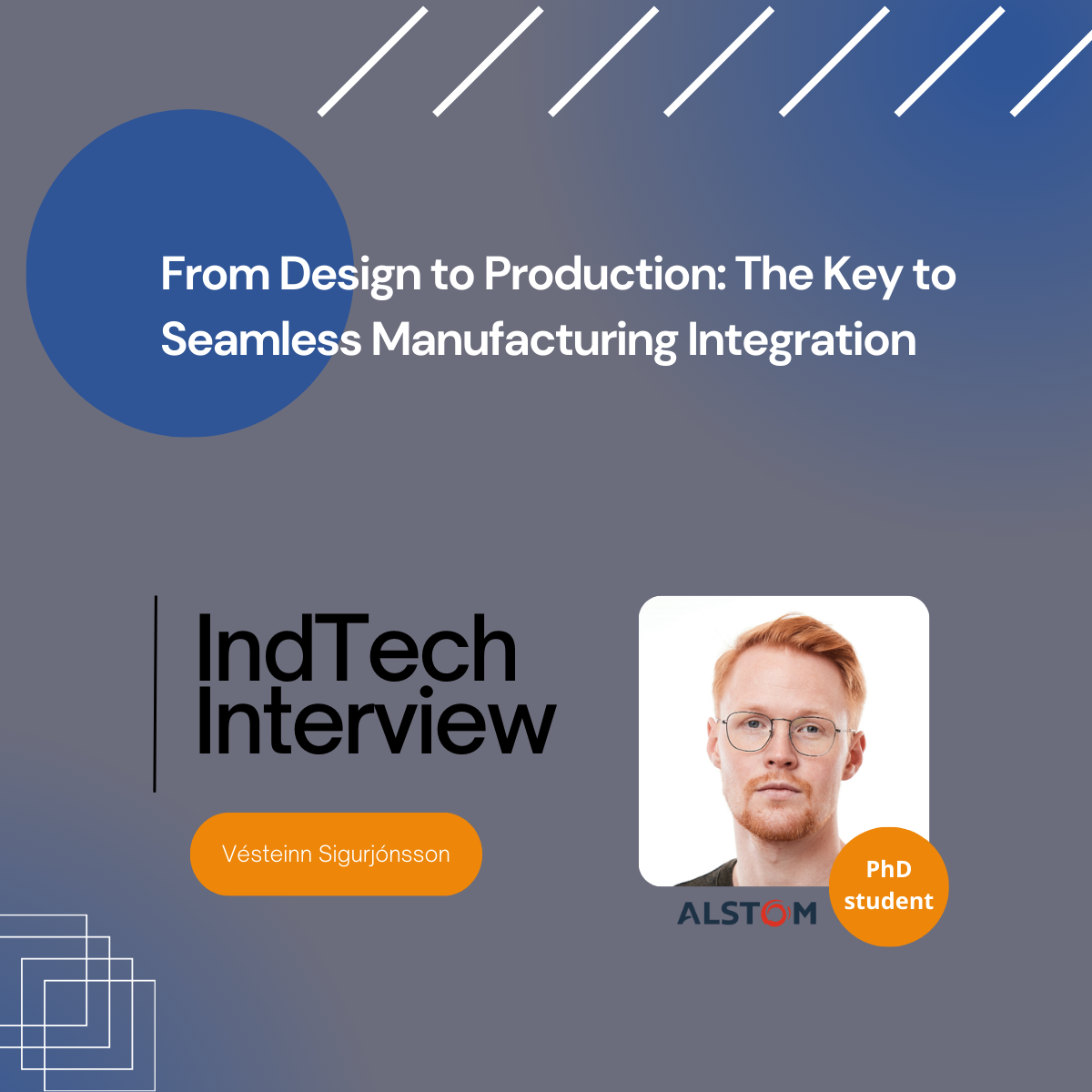From Design to Production: The Key to Seamless Manufacturing Integration
Large manufacturers often lead the way in digital innovation, but what about smaller, low-volume producers? These companies operate in a competitive environment, yet many still struggle with outdated systems that hinder their ability to bring new products to market efficiently. Vésteinn Sigurjónsson’s research explores technical interoperability—the ability of systems to seamlessly share and process data—and how improving it can help low-volume manufacturers streamline their design-to-production process and stay ahead of the curve.
The Spark Behind the Research
Vésteinn Sigurjónsson is originally from Iceland and holds an M.Sc. degree in Industrial Engineering and Management from Linköping University, where he specialized in Operations Management. Currently, he is pursuing a Ph.D. in Industrial Digitalization as an Industrial Doctoral student at Alstom, where his focus is analyzing workflows and identifying improvements via digitalization.
Sigurjónsson’s interest in technical interoperability came to be because of a noticeable gap in digital adoption among low-volume manufacturers. “These companies operate in an incredibly competitive market,” he explains, “yet they’ve struggled to fully implement digital tools that could streamline their processes.” His research set out to explore how enhancing interoperability within digital infrastructures could bridge this gap, ultimately improving the transition from product design to functional prototypes.
His background significantly influenced his research focus. “Given my experience in industrial and software engineering, as well as IT consulting, it made sense to combine these perspectives,” he says. However, even with a clear vision, the research took unexpected turns. Initially, he started with a broad focus on digital transformation, but Sigurjónsson soon recognized the need to narrow it down. “Digitalization is an expansive field. I needed to concentrate on something more specific, which is how technical interoperability became the core of my study.”
The Impact of Poor Interoperability on Innovation
One of the most striking findings in his study was how poor technical interoperability hinders efficiency and innovation. “We saw that inefficiencies in data exchange caused repetitive tasks and increased manual workloads,” he notes. Worse yet, it became a barrier to innovation. “When systems don’t communicate effectively, it slows down digital transformation efforts and makes it harder for companies to improve their existing products”.
Critical breakdowns in design-manufacturing integration often occur early in the New Product Development (NPD) process, especially when customer requirements are translated into internal product specifications. Another major problem area is the handover between design and manufacturing, where inefficiencies in data exchange result in production delays and increased costs.
“The handover between these two functions wasn’t as smooth as it should be due to poor data flow,” he explains. “If manufacturers want to remain competitive, they need a seamless transition from design to production.”
A Roadmap for Improvement
So, how can low-volume manufacturers improve technical interoperability? According to Sigurjónsson, the first step is mapping out the existing product data infrastructure. “Companies need to assess their interoperability gaps,” he advises. “Understanding where the flow of data is lacking is crucial before implementing any solutions.”
“More companies are realizing that leveraging their data is essential for staying competitive”
And the future? It lies in automation, AI, and machine learning. “More companies are realizing that leveraging their data is essential for staying competitive,” he says. AI-driven solutions could streamline design-manufacturing integration and significantly reduce inefficiencies in product development.
For companies looking to enhance their design-manufacturing integration, Sigurjónsson’s advice is clear: take a deep dive into your infrastructure. “One of the most eye-opening moments in my research was when I presented our interoperability assessments to management. Seeing is believing,” he emphasizes.
As digitalization continues to reshape manufacturing, companies that embrace technical interoperability will improve efficiency and unlock new opportunities for innovation. Sigurjónsson’s research provides a compelling roadmap for how they can achieve this.
About ALSTOM
Alstom is a French multinational rolling stock manufacturer which operates worldwide in rail transport markets. It is active in the fields of passenger transportation, signaling, and locomotives, producing high-speed, suburban, regional and urban trains along with trams.

